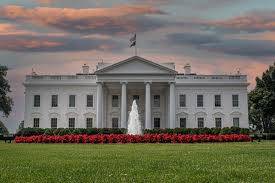The White House stands as an iconic symbol of American democracy, serving not only as the official residence of the President of the United States but also as a historic landmark that embodies the nation’s political heritage and global influence. This article delves into the rich history, architecture, significance, and functions of the White House, exploring its evolution from a simple mansion to a symbol of presidential authority and national identity.
History and Evolution
1. Early History:
The White House, located at 1600 Pennsylvania Avenue NW in Washington, D.C., was designed by James Hoban, an Irish-born architect, in the neoclassical style. Construction began in 1792 under President George Washington’s administration, with the building intended to serve as the President’s House.
2. Burned and Rebuilt:
During the War of 1812, British forces set fire to the White House, necessitating extensive reconstruction and renovation. President James Monroe oversaw the restoration, with the building reopening in 1817, showcasing its iconic white painted exterior, hence earning its enduring name.
3. Expansion and Modernization:
Over the centuries, the White House underwent numerous expansions and renovations to accommodate the growing needs of presidential functions and staff. Significant expansions occurred during the presidencies of Thomas Jefferson, Theodore Roosevelt, and Harry S. Truman, each leaving their mark on the building’s architecture and layout.
Architecture and Design
1. Neoclassical Influence:
The White House’s architecture reflects neoclassical principles, characterized by its symmetry, columns, and pediments. The central section features a portico with columns and a triangular pediment, flanked by two wings housing offices, reception rooms, and ceremonial spaces.
2. Interior Layout:
The White House comprises several floors, including the Ground Floor, State Floor, and Second Floor. The State Floor hosts the public and ceremonial rooms such as the East Room, Blue Room, State Dining Room, and the Oval Office—a symbol of presidential power and leadership.
3. Gardens and Grounds:
The White House grounds encompass approximately 18 acres, featuring formal gardens, lawns, and historical monuments such as the South Lawn, Jacqueline Kennedy Garden, and the famous Rose Garden—a venue for official ceremonies and events.
Functions and Symbolism
1. Residence of the President:
The White House serves as the primary residence of the President and their family, providing living quarters, private offices, and recreational spaces amidst the responsibilities of leading the nation.
2. Seat of Executive Power:
As the official workplace of the President, the White House houses the Oval Office and the West Wing—where the President’s senior advisors and cabinet members work on policy matters and administrative affairs.
3. Ceremonial and Diplomatic Functions:
The White House hosts numerous official events, state dinners, receptions, and ceremonies that showcase American hospitality and diplomacy, welcoming world leaders and dignitaries from across the globe.
4. Historical Significance:
Throughout its history, the White House has witnessed significant events—from political debates and policy decisions to social movements and cultural milestones—that have shaped the course of American history and global affairs.
Cultural and Political Legacy
1. Presidential Legacy:
Each President leaves their mark on the White House through personal style, preferences, and policy initiatives, reflected in changes to its interiors, furnishings, and decorations.
2. Public Access and Education:
The White House offers public tours and educational programs that provide visitors with insights into its history, architecture, and the daily operations of the presidency, fostering civic engagement and appreciation for democratic institutions.
3. Symbol of American Democracy:
Beyond its physical structure, the White House symbolizes the enduring principles of democracy, leadership, and governance that define the United States, representing a beacon of hope and freedom worldwide.
Challenges and Preservation Efforts
1. Preservation Challenges:
Maintaining the White House’s historic integrity and structural stability presents ongoing challenges, requiring careful restoration and conservation efforts to preserve its architectural heritage.
2. Modernization and Security:
Balancing the preservation of historic features with the need for modern amenities and security enhancements poses unique challenges in adapting the White House to contemporary operational standards.
3. Sustainability Initiatives:
In recent years, efforts have been made to enhance the White House’s energy efficiency, reduce environmental impact, and promote sustainability through initiatives such as renewable energy adoption and green building practices.
Conclusion
The White House stands as a testament to the resilience of American democracy and the enduring legacy of its presidents. As both a historic residence and a symbol of national identity, the White House continues to inspire awe and reverence, serving as a tangible reminder of the nation’s past, present, and future aspirations. By preserving its architectural splendor, fostering civic engagement, and upholding democratic values, the White House remains a beacon of hope and leadership for generations to come.


